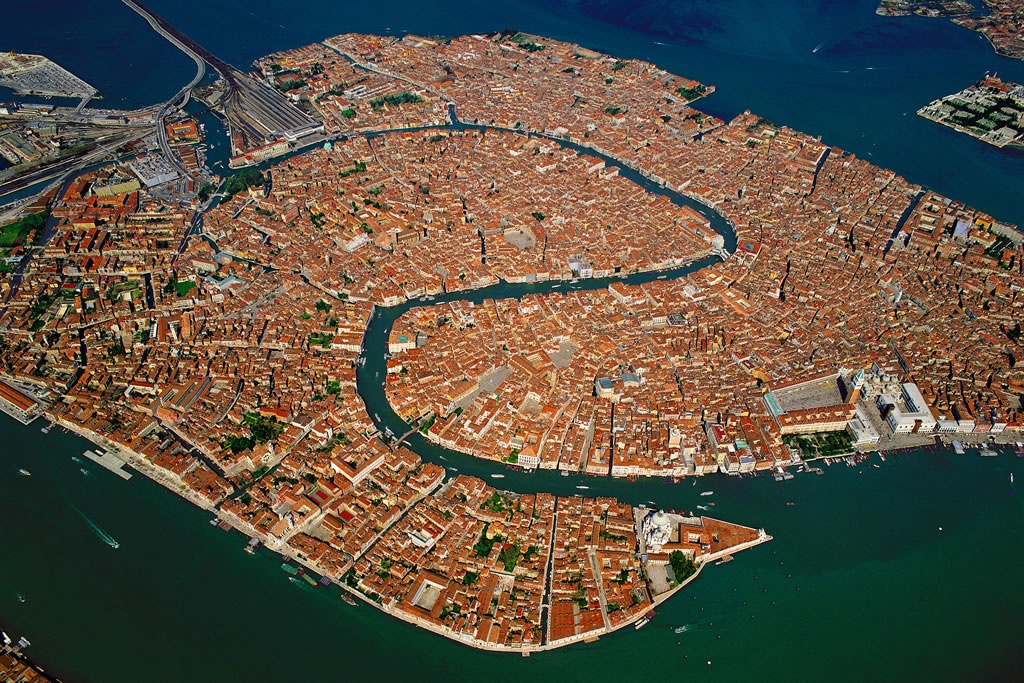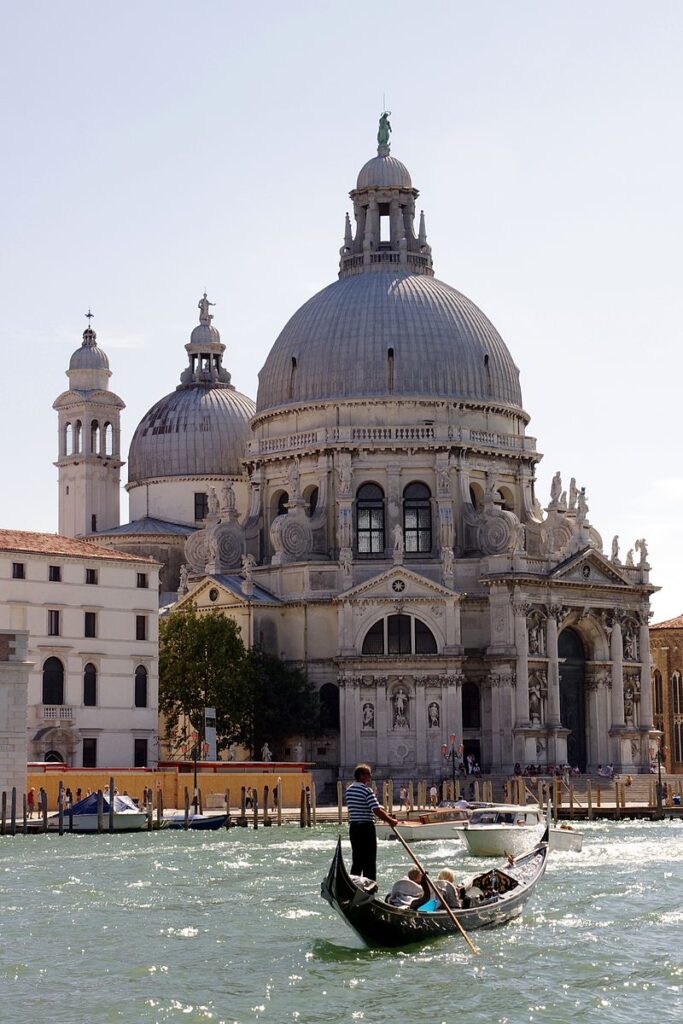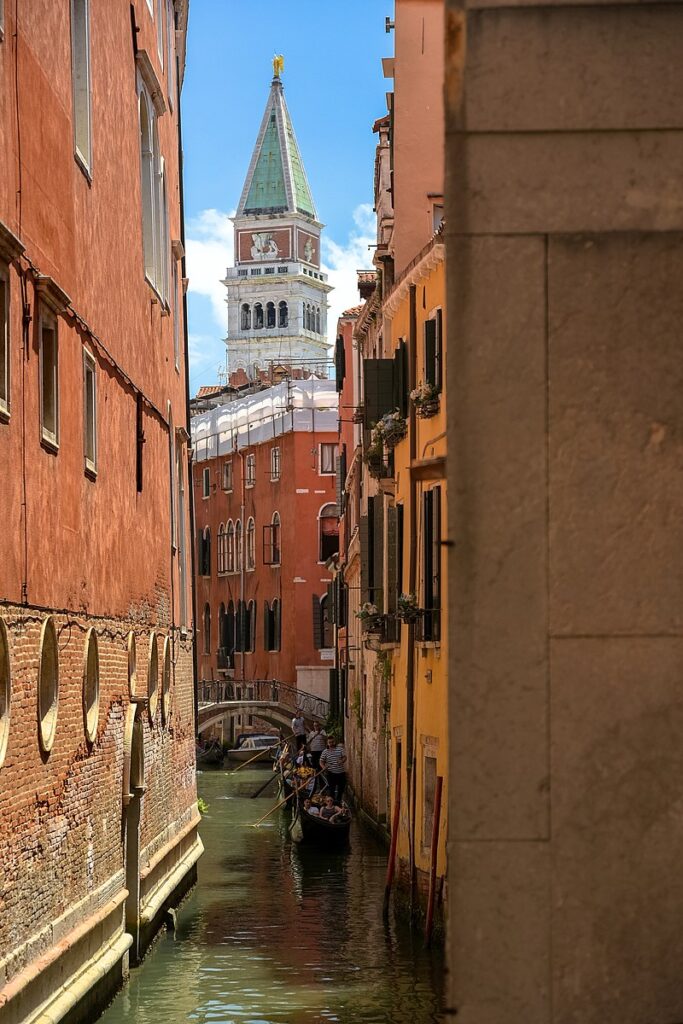Rising up out of the water like someplace from a fairy tale, Venice is a city of extremes.
A romantic destination of bridges and canals… and a moldering cesspool of crumbling buildings tilting slowly towards the mud that has supported them for a thousand years or more.
It begs the question: why was this astonishing city built in the middle of an inhospitable marsh? And how did they accomplish this seemingly impossible task so many hundreds of years ago?

The Founding of Venice
The early origins of Venice are murky – fitting, for a city that rose up from the muck.
Long before the city was built, this land past the northernmost reaches of the Adriatic Sea was inhabited by the Veneti people who gave the area its name. They spoke Venetic, an extinct language that shared features with both Latin and local Germanic languages.
They allied with Rome in 182 BC, and their culture gave way to gradual Romanization. Venice began with a population of refugees. People fled the cities and countryside of Northern Italy as the Roman Empire began to crumble.
The region was frequently attacked by the Huns and by various Germanic peoples, who destroyed a number of Roman cities. Roman residents took refuge in the marshy lagoons near the coast that had been previously unoccupied, save for a smattering of fishermen.
There are no surviving documents from the time that the Republic of Venice was founded. Those damp buildings and watery streets aren’t kind to anything so ephemeral as parchment. But the city is said to have been officially founded at noon on the 25 of March in the year 421 AD.
By the seventh century, the Imperial District of Venetia ruled a large swath of land encompassing the northernmost reaches of the Adriatic Sea.
This marshland had been inhabited for centuries by the time the twelve founding families elected their first doge, the official leader of Venice, in 697.
The Construction of Venice
Early settlers lived in rough structures made of wood, reeds, and clay. There was also some dry land in the marsh.
The fishermen and refugees who lived there in Roman times built their simple dwellings along the sandy coastline and on the small islands that dotted the wetlands. As the population grew, they had to devise a way to build where there was no dry land at all.
They began by driving long wooden posts directly into the muck that lay beneath the water. They used water-resistant varieties of wood, such as larch and oak.
Countless wooden posts were used in the construction of Venice. The Santa Maria Della Salute church alone required the use of over one million stakes to construct its foundation.

Most of this wood was sourced from the forests of Croatia, Montenegro, Slovenia, and Northern Italy. It was transported to Venice by water.
Under the soft mud is a layer of solid clay called Caranto. This dense material is found two meters beneath the surface in some areas but may be as deep as ten meters in others.
In the early days, the posts were driven in by men with huge handheld pile drivers – a difficult and potentially dangerous job.
Wooden posts were laid out in a spiral that began at the center and moved out to the edges of the foundation. More posts were placed closer together beneath the outer walls, to support the immense weight.
These posts were topped with two layers of horizontal planks and then with stone, nearly always an impermeable variety of limestone quarried in Istria, Croatia. Finally, the building was constructed.
Venetian buildings were generally constructed with brick. Then, the dense variety of limestone called Istrian stone was used to protect the brick walls from the salty water of the lagoon. Sometimes marble was used to decorate the upper parts of the buildings.
These techniques had been used elsewhere by the Romans, but the Venetians improved upon pre-existing architectural techniques.
As buildings became larger and heavier, the wooden poles were placed closer together to support more weight. They were generally five or six meters long and couldn’t always reach the sturdy layer of clay beneath the softer mud.
If the Caranto was too deep to reach, the poles were placed so close together that there was virtually no space between them. If spaces were left, they were filled with stones and gravel. As weight was placed on top of these supports, the mud beneath became so compacted that it became as stable as the Caranto clay.
Most of the surviving man-made ground of Venice was created in the 15th and 16th centuries, but some were created much earlier.
St. Mark’s Bell Tower
St. Mark’s Bell Tower collapsed in 1902, giving people the opportunity to investigate what was below.
The foundation had been created in the 10th century, and the poles used were about four meters long. The planks were laid atop these poles and the subsequent stone added another three and a half meters in height to the foundation.
The wooden piles are still mostly intact, preserved by the mud itself. The wood had mineralized, making it nearly as hard as stone. Lack of oxygen and high mineral content in the silty saltwater sped up the process, giving Venice its enduring foundation.

A City of Water
Venice was an important trading hub between Europe and the Near East, amassing immense riches over the centuries through the trade of salt, spices, and luxury goods.
Eventually, Venice became a formidable power in the region and commanded a great navy. Its watery location protected it from enemies. When Charlemagne’s son Pepin tried to invade, he failed to even reach the city.
Venice reached its zenith in the 15th century. After that, it slowly declined and was captured by Napoleon in 1797.
These days, a sea level two meters higher than the water level at which Venice was originally built is wreaking havoc. Mobile floodgates have been designed to staunch the tide and postpone the inevitable destruction of The Floating City.

